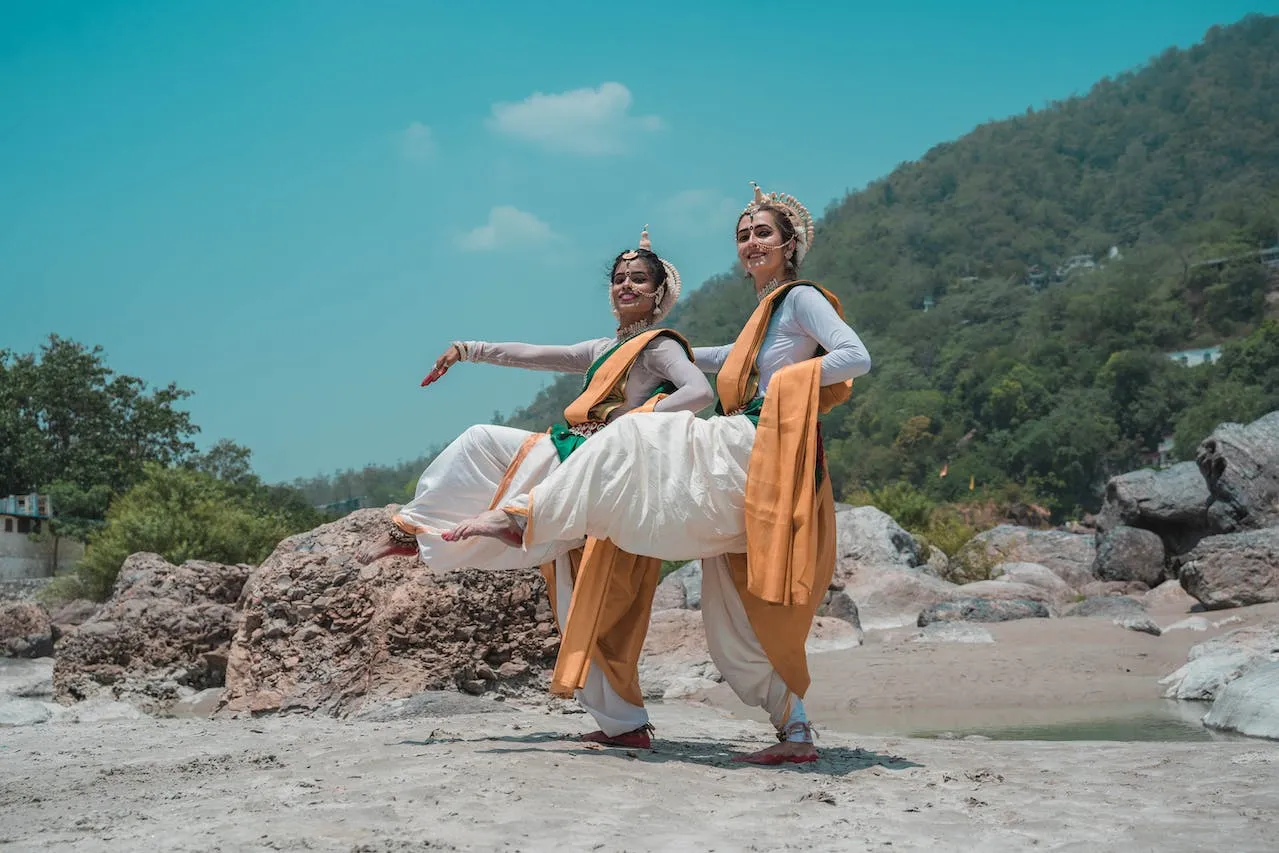Odissi Dance
Odissi dance, a classical form originating from the cultural tapestry of Odisha, India, is a mesmerizing art that seamlessly weaves together tradition, expression, and rhythmic finesse. In this article, we delve into the enchanting world of Odissi, exploring its rich history, distinctive features, and the profound cultural significance that has made it a captivating dance form cherished not only in India but across the globe.
Unveiling the Roots
Odissi finds its roots in the ancient texts of Natya Shastra, reflecting a dance tradition deeply ingrained in the cultural and religious fabric of Odisha.
The dance form flourished within the sacred precincts of temples, with the Jagannath Temple in Puri being a significant incubator for the evolution of Odissi.
Odissi Dance Costume
The visual allure of Odissi is heightened by the exquisite costumes worn by dancers. The traditional attire includes a vibrant sari draped in a unique style, complemented by elaborate jewelry such as the maang tika, necklaces, waist belts, bangles, and anklets. The costume not only adds to the aesthetic appeal but also symbolizes the cultural richness and devotion associated with the dance.
The Odissi dance costume is an integral part of the classical dance form, contributing to its visual richness and cultural significance. Here are the key components of the traditional Odissi dance costume:
Sari (Saree):
Odissi dancers wear a special type of sari that is draped in a unique and elaborate manner. The sari is typically made of silk or other fine fabrics and is chosen for its vibrant colors and traditional patterns.
Jewelry:
Odissi dance costumes are adorned with various pieces of traditional jewelry. These include:
Maang Tika: A decorative piece worn on the forehead.
Necklaces: Elaborate necklaces that complement the attire.
Waist Belt (Odiya Pati): A thick, ornate belt worn around the waist.
Bangles (Baanuli): Traditional bangles worn on the wrists.
Anklets (Ghungroo): A string of small bells worn around the ankles, adding to the rhythmic elements of the dance.
Makeup:
Odissi dancers apply traditional makeup to enhance facial expressions and features. This includes the use of bold colors for the eyes, lips, and sometimes even the hands.
Bindi:
A decorative mark worn on the forehead, usually in the shape of a red dot, to accentuate the dancer’s facial expressions.
Hair:
The hair is typically tied in an elaborate bun, adorned with flowers, hairpins, and other decorative elements.
Gota (Lace):
Many Odissi costumes have intricate lacework or gota border, adding to the overall elegance of the attire.
The combination of these elements creates a visually stunning and culturally rich costume that is not only a reflection of tradition but also an essential aspect of the storytelling in Odissi dance. The attire adds grace to the movements and helps convey the emotions and narratives expressed through the dance form.
Expressive Mudras and Abhinaya
Odissi is characterized by its intricate hand gestures, known as mudras, which convey specific emotions and meanings. These mudras, coupled with expressive facial movements, create a narrative that transcends language barriers.
Abhinaya, the art of expression, is a cornerstone of Odissi, allowing dancers to communicate stories and emotions with grace and precision.
Intricate Footwork and Postures
The dance form boasts a unique footwork style, characterized by intricate patterns and rhythmic complexity. Dancers master movements like chaal, bhramari, and pada bheda, showcasing a harmonious blend of strength and finesse.
Odissi’s distinctive postures, with fluid body movements and coordinated poses, contribute to the overall visual poetry of the performance.
Harmony of Taal and Music
Odissi is a dance of rhythm, with performances intricately woven into classical Odissi music. Accompanied by instruments such as the mardala, flute, violin, and sitar, dancers follow specific rhythmic patterns, or taals, enhancing the immersive experience for the audience.
The synergy between footwork, hand gestures, and musical accompaniment creates a symphony of visual and auditory delight.
Themes and Global Recognition
Odissi often explores themes from Hindu mythology, religious stories, and devotional poetry. Its universal appeal has led to global recognition, with Odissi being embraced on international stages.
Renowned dance festivals and institutions worldwide showcase the artistry of Odissi, fostering cross-cultural appreciation for this timeless dance form.
Conclusion
In the tapestry of classical Indian dance, Odissi stands as a beacon of elegance and cultural richness. Its expressive storytelling, intricate movements, and deep-rooted traditions continue to captivate audiences worldwide. As we celebrate the beauty of Odissi, we embark on a journey that transcends time, embracing the enduring allure of this enchanting dance form.
FAQ,s
Odissi is the dance form of which state ?
Odissi is the classical dance form of the Indian state of Odisha. It originated in the temples of Odisha and has deep roots in the cultural and religious traditions of the region.

